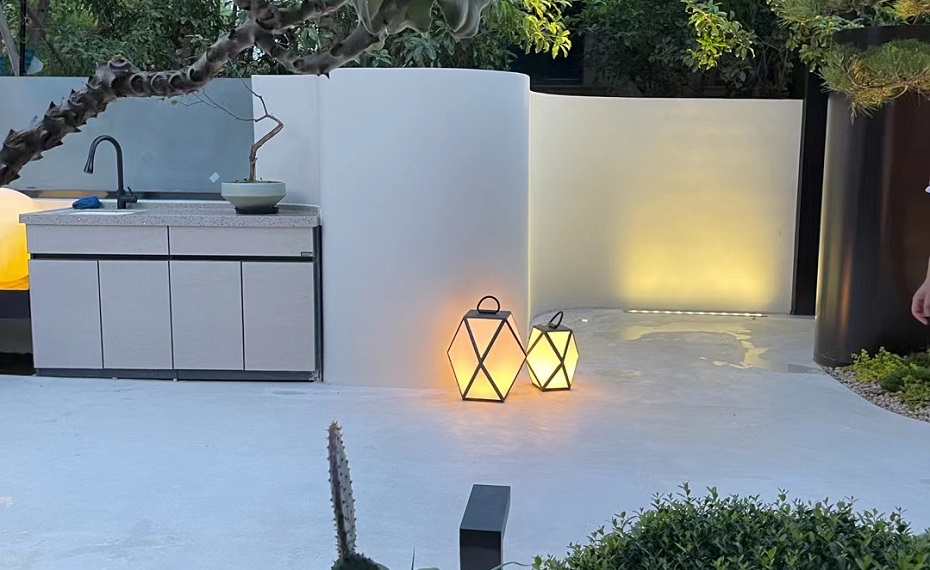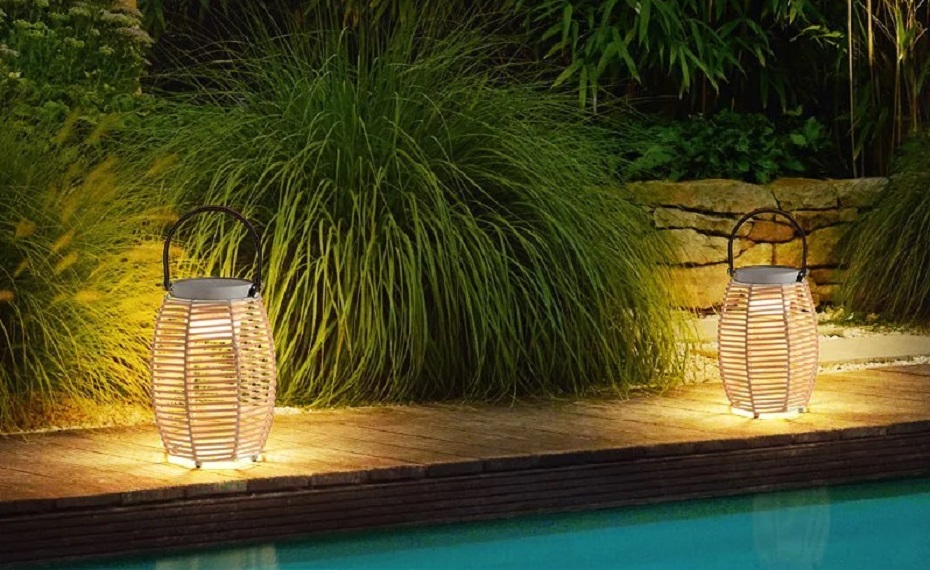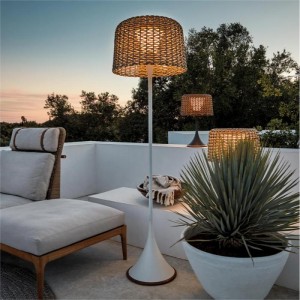As environmental awareness increases, solar lighting as a green lighting solution, are becoming more popular. However, many people have noticed that the brightness of solar lanterns seems much lower than that of indoor lights. Why is this the case?
Compared to indoor lighting, the brightness of solar lanterns is limited by several factors, including sunlight duration, light intensity, outdoor lighting conditions, and energy reserves. These factors mean that solar lanterns may not be as bright as indoor lights under certain conditions.
First of all, it’s important to note that solar lanterns are generally designed as ambient lights rather than functional lighting. Whether you hang a few solar lanterns in your garden or take them camping, they are very popular. In fact, it’s precisely because of their softer, less intense light that they create a cozy and romantic atmosphere, filling gardens and patios with a sense of warmth and comfort.

Reasons why solar lanterns are not as bright:
1. Limited energy source
Solar lanterns derive their energy from sunlight, using photovoltaic panels to convert solar energy into electricity, which is stored in batteries. However, the size of solar panels is usually small, and the efficiency of energy conversion and storage is limited, meaning the amount of energy available to power the lantern is relatively low.
Compared to indoor lighting, solar lanterns are affected by outdoor lighting conditions. On cloudy days or at night, their brightness may be reduced. Additionally, the efficiency of solar panels can be impacted by shadows or obstructions, further affecting the lantern’s brightness. In continuous rainy weather or when there is insufficient sunlight, the lanterns may fail to charge properly.
2. Power and efficiency design limitations
Most solar lanterns are designed with energy efficiency and prolonged use in mind, so they typically use low-power LED bulbs. While LED lights are energy-efficient, the balance between brightness and battery life is a critical design consideration for solar lanterns to ensure they can work for long hours at night. If the brightness is too high, the battery will drain quickly, and the lighting time will be greatly reduced, which would not meet the needs of outdoor use. In contrast, indoor lights are connected to the power grid and don’t need to worry about energy supply, so they can provide higher brightness consistently.
3. Functionality impacts brightness
Solar lanterns are mainly used for outdoor decorative lighting in gardens, yards, camping, and so on. Their primary function is to provide mood lighting rather than strong illumination. Solar lanterns usually emit soft, warm light aimed at creating a comfortable environment. In contrast, indoor lights often need to be bright enough for activities such as reading or cooking, so their brightness is much higher.
4. Battery technology limitations
The lithium or nickel-metal hydride batteries in solar lanterns have limited capacity, affecting how long and how bright the lantern can stay lit. Although modern battery technology continues to improve, the small size of lantern batteries can’t compare to the power grid used by indoor lights. Additionally, battery performance can be affected by weather and environmental temperatures. In particular, during winter or rainy days, the charging efficiency of the battery decreases significantly, leading to dimmer lights.
5. Differences in light source technology
Solar lanterns typically use low-brightness LED bulbs, whereas indoor lighting can incorporate high-power LEDs or other types of light sources. While solar lanterns also use LED lights, they often choose lower-power bulbs to conserve energy. This design helps extend battery life, but it limits brightness. Indoor lights, on the other hand, are not constrained by energy consumption and can use more power to illuminate brighter bulbs.
Considering the impact of these restrictions on use, XINSANXING has specially set up a TYPE C port that supports USB cable charging in the development of solar panels. As long as it rains for two or three consecutive days, we can use the matching or other TYPE C data cables at home to charge, and it only takes about 4 hours to be fully charged. And our charging port is designed on it, so you don’t need to remove the solar panel, just plug it in and charge it, which is simple and convenient.

How to choose a suitable solar lantern? Here are a few key points to choose:
Battery capacity: Don't blindly pursue solar lanterns with large-capacity batteries. Balance the battery capacity and lighting time according to actual needs to ensure that you achieve your expected effect.
LED lamp power: Check the power of the LED bulbs when purchasing; higher-powered LEDs can provide stronger brightness, while low-power ones are relatively more suitable for setting the atmosphere.
Photovoltaic panel efficiency: More efficient solar panels can collect more energy in a shorter period, ensuring adequate charging during the day.
Waterproof performance: Particularly for outdoor solar lanterns, good waterproof performance is essential to ensure they function well in rainy or snowy conditions.
The brightness of solar lanterns is lower than indoor lights due to limitations in their energy source, design purpose, and application scenarios. They are mainly used for outdoor decoration or lighting, focusing on energy efficiency and durability rather than providing high brightness. By understanding these limitations, You can have more reasonable expectations of solar lighting and choose products that suit your specific needs.
FAQs
On cloudy days, sunlight is weaker, and the solar panels cannot charge fully, resulting in less stored energy and dimmer lights at night.
Most solar lantern batteries last between 1-2 years, depending on usage frequency and weather conditions. Regular cleaning of the solar panels and checking battery health can help extend battery life.
You can choose solar lanterns with high-power LED bulbs or larger battery capacities. Additionally, ensuring that the solar panels receive sufficient sunlight each day is crucial.
By understanding these key points, you can adjust your expectations reasonably and make smarter choices when selecting solar lights, helping them perform at their best in outdoor environments.
If You Are in Business, You May Like
Post time: Sep-10-2024









